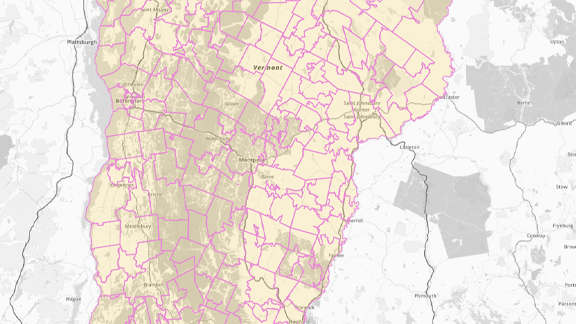- Blog
- Geo Mapping
- Why Zip Code Heat Maps Are Critical for Retail Success
In retail, location isn’t just everything—it’s the difference between explosive growth and stagnation. Understanding exactly where your customers live, spend, and shop can unlock untapped market potential, and the most powerful way to gain that clarity is with a zip code heat map. These visual tools empower retail businesses to segment customer behavior, analyze geographic sales data, and make smarter decisions across every department—from marketing to logistics.
Whether you’re planning your next store opening or optimizing delivery zones, heat maps that visualize performance by postal code reveal insights traditional spreadsheets miss. With a few clicks, you can spot regional trends, identify high-value customer clusters, and uncover gaps in coverage that hold back your bottom line.
What Is a Zip Code Heat Map?
A zip code heat map is a visual representation of data grouped by postal code and color-coded to show relative intensity. For example, you might shade each zip code based on the number of purchases, the revenue generated, or population demographics. By visualizing this information geographically, businesses can easily identify patterns that inform growth strategies, ad targeting, inventory placement, and more.
Unlike generic maps, these tools are driven by your business data and built for action. You can create a heat map with zip codes using tools like Mapline that integrate with your Excel files or CRMs, delivering real-time decision support for your team.
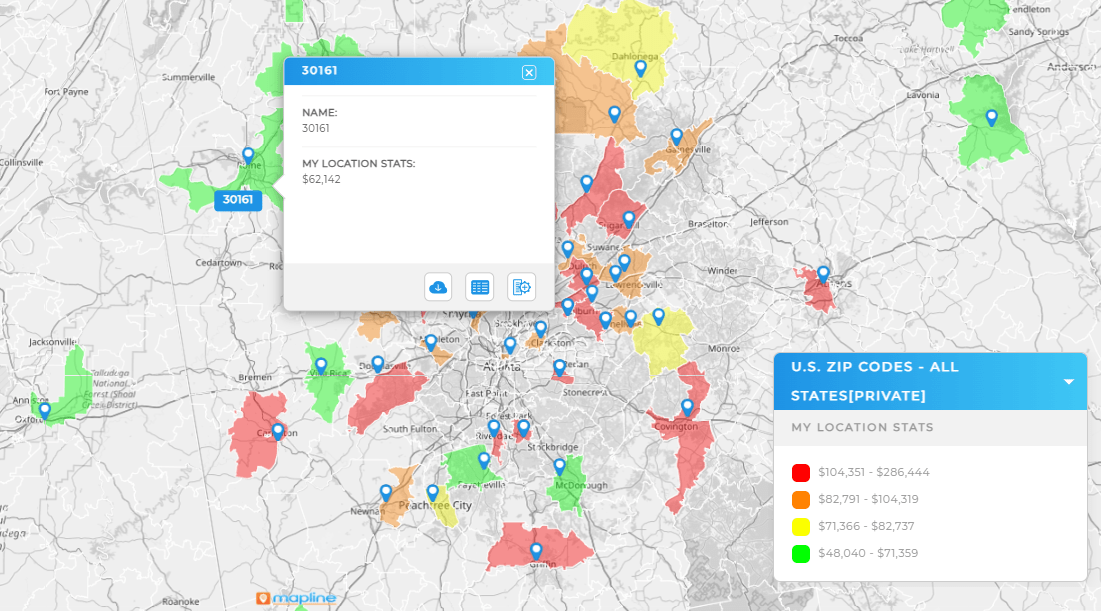

Pro Tip: Want to build a zip code heat map in under 60 seconds? Upload your spreadsheet to our Geo Mapping platform and visualize your customer base instantly.
Key Retail Applications for Zip Code Heat Maps
Every zip code holds a story. The key is knowing how to read it—and act on it.
Retailers use zip code heat maps to uncover valuable insights about customer density, sales performance, and market demand. By layering this data on an interactive map, they can instantly spot high-performing areas, underserved regions, and shifting trends. This empowers smarter decisions around store placement, targeted marketing, delivery coverage, and resource allocation. Whether you’re expanding locations or fine-tuning campaigns, postal code mapping software gives you the local context you need to drive retail growth.
1. Retail Site Selection
Location intelligence tools like zip code heat maps are essential for identifying the best places to open new stores. By analyzing foot traffic, existing customer density, and competitor presence, businesses can forecast revenue potential with high confidence. This approach significantly reduces the guesswork of retail site selection and leads to faster ROI on brick-and-mortar investments.
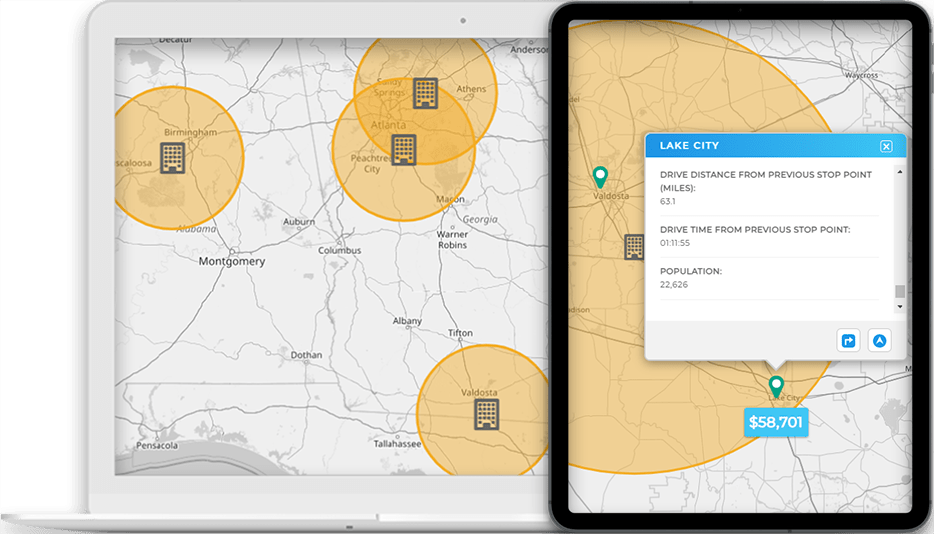
2. Sales Territory by Zip Code
When sales teams are spread across a wide region, efficient territory management is critical. A sales territory by zip code map lets you divide areas equitably, assign reps based on opportunity, and avoid overlap or under-coverage. This boosts productivity and fosters accountability among reps by giving them clearly defined boundaries.
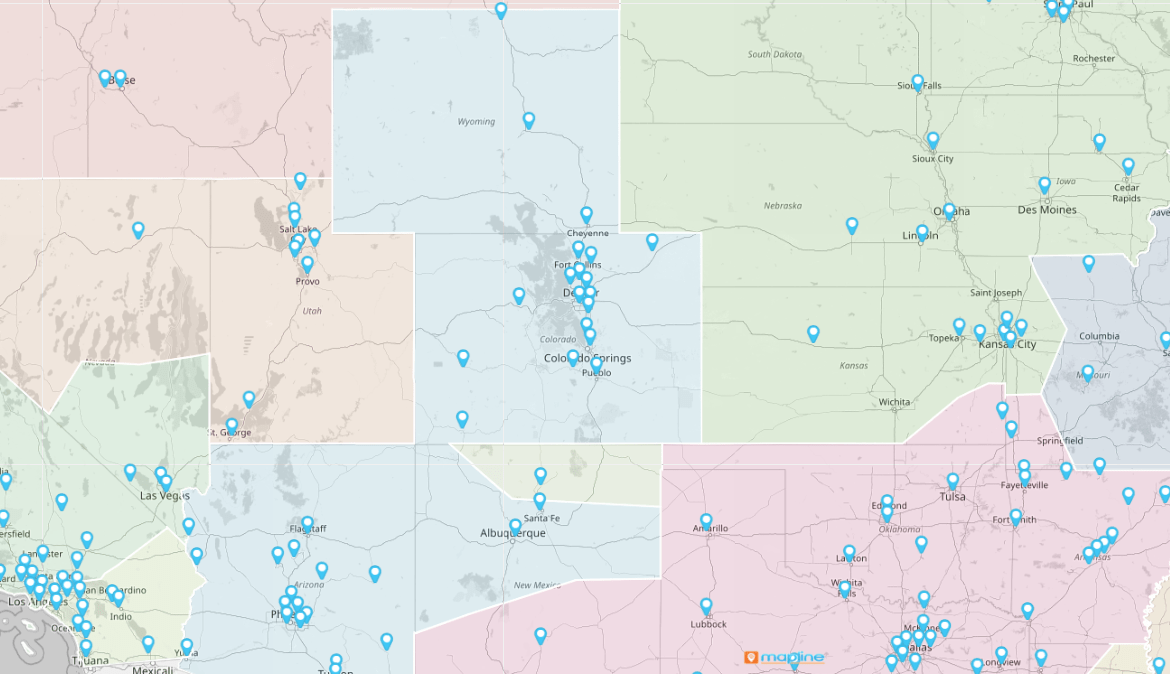
3. Customer Distribution and Segmentation
Customer distribution by zip code helps retailers personalize outreach and tailor promotions by geography. With a customer segmentation map, you can break down your audience by income, age, purchasing behavior, or loyalty status—making your campaigns far more effective than one-size-fits-all approaches.
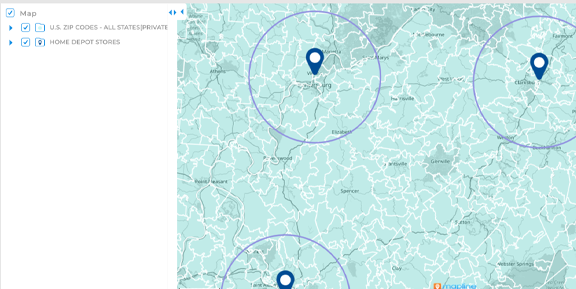
4. Demographic Heat Mapping
Retailers often pair internal data with public datasets for a more complete picture. Demographic heat mapping allows you to target specific buyer personas based on census information—like population density, education levels, or household income—at the zip code level. This is especially useful when testing new markets or launching high-ticket products.
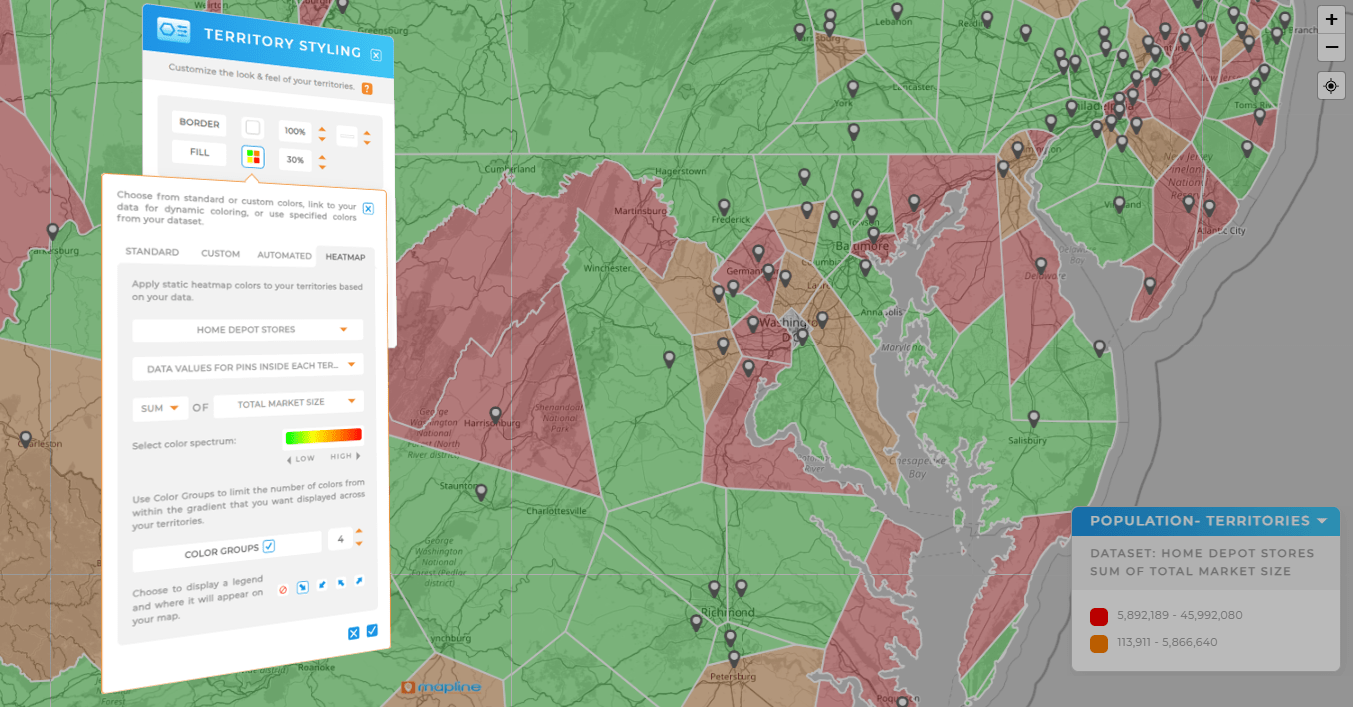
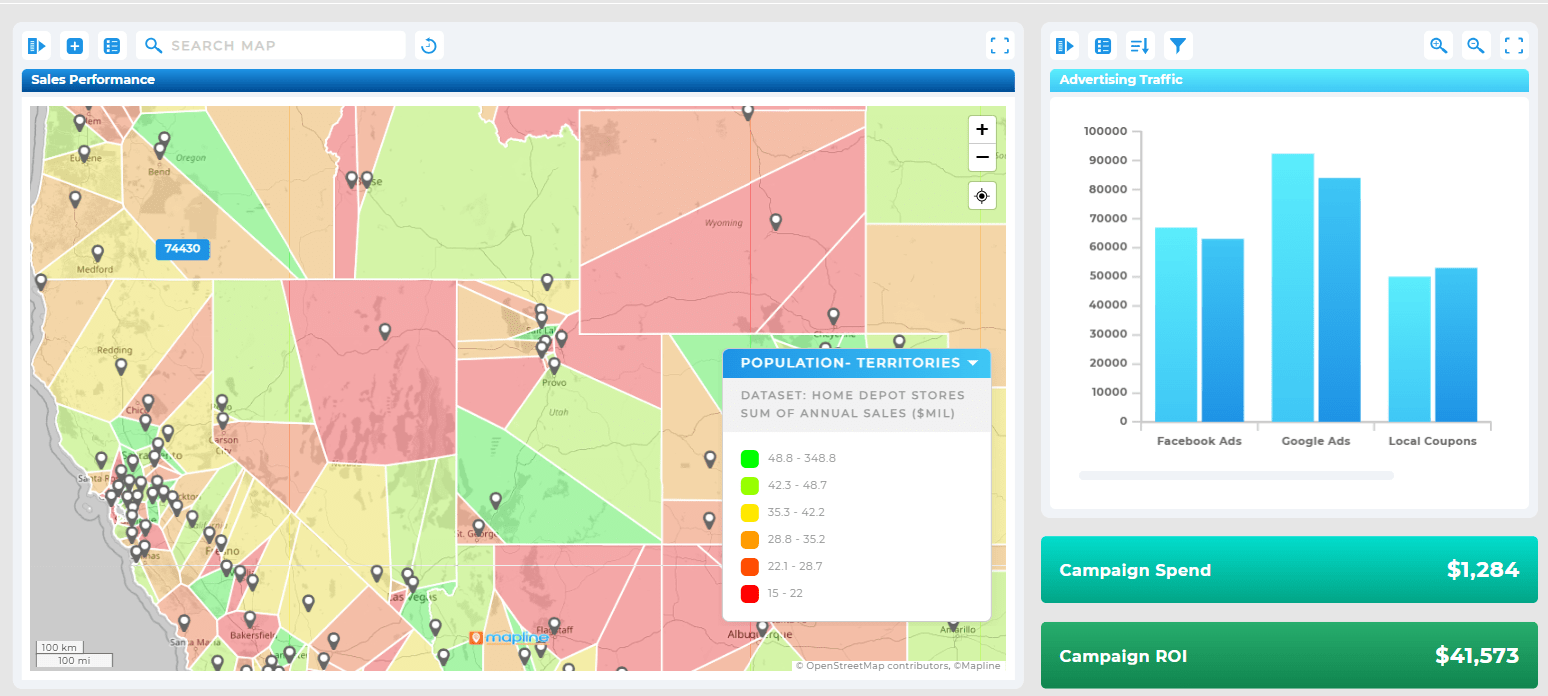
5. Geographic Sales Analysis
Seeing your revenue, conversions, or average order value by postal code makes it easy to spot trends and track performance. With geographic sales analysis, you’ll know which markets are outperforming, which need attention, and where to direct future investments.
Real-World Example: Quality Enclosures
Consider how Quality Enclosures, a nationwide provider of glass shower doors, used Mapline’s zip code heat map generator to transform their delivery network. By mapping delivery volume by zip code, they identified inefficiencies and redesigned their routes—cutting delivery costs by 30%. That’s the power of visualizing data instead of sifting through spreadsheets.
Whether you’re managing a regional delivery fleet or planning targeted mailers, zip code-level insights give you the edge to outperform competitors and grow faster.

How to Create a Heat Map With Zip Codes
Building your own heat map doesn’t require GIS expertise. In fact, with the right tools, it’s easier than ever. Here’s how to get started with Mapline:
- Upload your Excel file with zip code data—no formatting required
- Select your metric (sales, units, visits, etc.) to color-code the map
- Choose a visualization type—gradient shading, point intensity, or choropleth
- Customize your view with filters, pin labels, and data tooltips
- Share or export your interactive map with stakeholders
For even faster results, try the zip code heat map Excel upload tool and generate an interactive map in seconds. With built-in filters, color gradients, and drill-down views, you’ll get actionable insights without coding or design skills.

Zip Code Heat Maps as a Competitive Advantage
In today’s fast-paced market, retailers can’t afford to wait weeks for analysis. A postal code heat map puts real-time insights in your hands, empowering you to adapt faster than the competition. Whether you’re refining ad targeting or choosing the next city to expand, you’ll have the data to back every decision.
Retail expansion strategy becomes less reactive and more predictive when your team can spot customer density patterns, underserved regions, or shifting market share as they happen. And when paired with delivery performance or inventory movement, the same map can inform logistics, staffing, and merchandising decisions.
In short: the right zip code market analysis doesn’t just inform your strategy—it shapes it.
Zip code heat maps help retailers visualize data like customer density, sales volume, and market trends in specific geographic areas. This allows businesses to identify which regions are driving revenue and which are underperforming. With this insight, retailers can allocate resources more efficiently, plan new store openings, or adjust marketing strategies. Instead of relying on spreadsheets or gut instinct, they make data-backed decisions. It’s a simple but powerful way to turn location data into retail success.
Retailers can create zip code heat maps using sales data, customer addresses, demographic information, shipping records, and more. Most mapping tools allow you to upload data from spreadsheets or connect directly to CRMs and other business systems. You can also overlay third-party datasets such as census data or income levels to add deeper context. This layered approach gives a complete picture of the market and helps you spot patterns quickly. The result is smarter strategy with real-world location insights.
Yes! Zip code heat maps are incredibly effective for planning and optimizing retail marketing campaigns. By visualizing where your customers are located and which zip codes show the strongest engagement, you can run highly targeted promotions. This allows you to increase ROI by focusing spend where it matters most. You can also identify lookalike regions that match your top-performing markets. With heat mapping, marketing becomes more precise, efficient, and impactful.
Absolutely. Even without physical storefronts, ecommerce brands use zip code heat maps to track order patterns, optimize shipping zones, and identify regional demand. These maps help highlight where customers are concentrated so you can tailor fulfillment, advertising, and inventory strategies. You can also use heat maps to compare performance between states or cities. For ecommerce brands looking to grow smarter, zip code analysis is a critical tool.
Look for heat mapping software that’s user-friendly, allows zip code-level analysis, and integrates easily with your data sources. Ideally, the platform should support features like filtering, data layering, and customization. For retailers, mapping tools with visual dashboards, territory analysis, and demographic overlays provide the most value. Tools like Mapline are built specifically for businesses and offer intuitive ways to visualize and act on your data. Choosing the right tool ensures your retail heat maps are both powerful and easy to use.
Related Posts
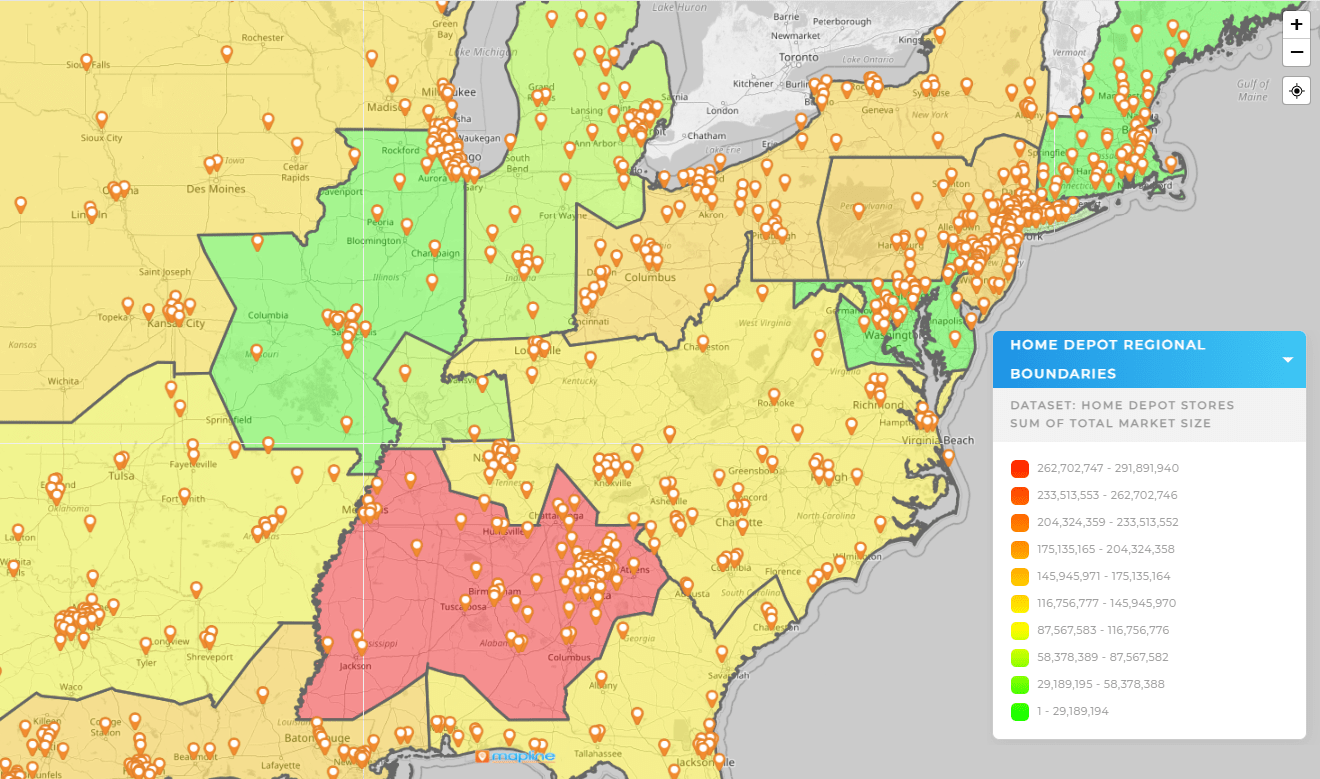
How to Make a Zip Code Heat Map in 3 Easy Steps
A zip code heat map gives you the clarity you need to make location-based decisions.

Sales Territory Mapping: How to Visualize + Plan
